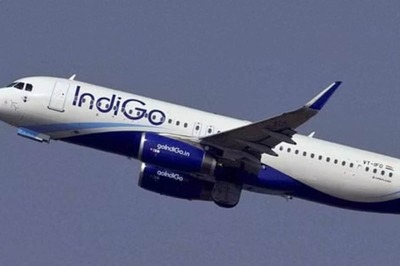
views
New Delhi: Pakistan Prime Minister Imran Khan’s offer to return IAF Wing Commander Abhinandan Varthaman, who became the human face of the flare-up between the two nations, ties in with the psychological operations unleashed by it with videos showing him being captured and later held in custody.
There was a paradigm shift in how the world perceived the escalating tensions between India and Pakistan after news of Abhinandan’s capture became public, with the situation becoming charged up—emotionally, if not militarily.
Twitter was buzzing with #BringBackAbhinandan and #AbhinandOurHero and 24 hours later, the number of people moved by it had only increased. In Pakistan, where he is being held captive, its citizens urged its Army to treat the pilot well.
Knowing fully well that the capture afforded it the chance to set the narrative, Pakistan Prime Minister Imran Khan addressed the nation and called India for dialogue and peace talks, making it clear that Islamabad did not want war. He said that Abhinandan’s release was the first step to talks.
This battle to control the narrative, experts said, was also the reason why Pakistan released a video of the captured IAF pilot, where he was seen sipping tea. A composed Abhinandan said he was being treated well and that he was ‘quite impressed’ by the Pakistani army officials.
When asked where he is from, he calmly replied, “Am I supposed to tell you this?” and further added he’s from down south. When asked which aircraft he was flying, he replied, ‘I’m not supposed to tell you this but I’m sure you’ve found the wreckage.” When asked if he was married, he replied in affirmative. The Wing Commander also chose to not answer what mission he was on.
As the 39-second video went public, there was a significant change in public mood.
The Ministry of External Affairs, which had earlier said that one pilot was “missing in action”, issued a demarche to Pakistan by Wednesday evening revolting against the ‘vulgar display’ of its pilot. But through all the day’s conversations and chatter, Pakistan had touched upon the psyche of the common man in India, indirectly putting pressure on the Narendra Modi-led government.
“It was a deliberate attempt. There is nothing innocent about it. It’s definitely psy-ops in the sense that why should you put out this video? You’re only trying to show that you’re treating him well. In the first set of videos that came out where he was physically manhandled by some locals. Pakistan would have got some criticism over it. They are playing the ‘responsible country’ card and showed that they are treating our pilot well,” said retired Lt General DS Hooda, the former commanding-in-chief of the Northern Command.
Former RAW chief Vikram Sood had a similar sentiment. He told News18, “Of course it’s psy ops. They wanteed to put pressure on us by releasing such a video. They asked him if he’s married, where he’s from, etc.”
Lt Col Sunil Narula, who was a fellow at the Institute for Defence Studies and Analysis, wrote in 2004 how “the psychological dimension of a conflict is as important as its physical dimension and psychological Operations (PSYOPs) have become even more relevant in this age of information, especially for a nation-state where the threat in the socio-psychological domain is more pronounced.”
As General Hooda pointed out too, the general conversation around how India and Pakistan ties should progress has changed.
“The general chatter turned emotional. Now, not only are people saying save the pilot but they are also saying there should be no war. The communication seems to have shifted,” he said. Sood further said that the strength that the captured pilot’s family had shown was an emotion that Pakistanis are looking to break.
“His father has been very brave through all this. The Pakistanis wanted to break that. They essentially want Indians to make a lot of noise. And to make us think with empathy and sympathy,” Sood explained.
The former RAW chief goes back to the IC-814 hijacking. “Remember what happened during the IC-814 hijacking. Television channels were full of protests and all the emotional chatter. That was also part of adding pressure on the government,” he added.
The government, on its part, too has taken the emotionally charged up route to address the concerns of the people. After days of silence, Prime Minister Narendra Modi addressed party workers through a video conference on NaMo app on Thursday.
“India will live as one, will work as one, will grow as one, will fight as one and will win as one,” Modi said. He added that it was necessary that “nothing happens that affects the confidence and morale of our soldiers” and gives the enemy an opportunity to raise a finger at India. Indians, he added, were “to act like a wall, a stone.”
“They (Pakistan) wanted to put pressure on the government so that the government agrees to do a deal with them sooner rather than later. It was to score a quick propaganda victory on us. Until now, were angry about the 40 soldiers they killed and now we are angry about them holding our pilot,” said Sood.
Dr Prem Mahadevan, with the Centre for Security Studies in Zurich, wrote that the ISI is thought to have used psychological and paramilitary operations in synergistic role. In the piece that is available on the Vivekananda International Foundation website, Mahadevan writes that the first was in late 1983, when masked turban-wearing gunmen hijacked buses in Punjab and selectively killed Hindu passengers.
The second case of (suspected) ISI subversion being used to camouflage (largely proven) paramilitary action occurred in Mumbai in 1993. The third case is Mumbai 2008—it is now known that the ISI was aware of Lashkar-e-Toiba’s plan to attack Mumbai, he wrote.
This time around, General Hooda said Pakistan is maintaining the stance that they do want to escalate.
“Pakistan is extremely concerned about India’s strong response and are therefore maintaining that they don’t want to escalate and they only did this to show their capability and also because we moved first. These statements and videos are their way of showing that they are peace-loving and that they don’t war and that this is what happens if it escalates. And this is what they want since it could put pressure on our government,” explained General Hooda.
The former commanding-in-chief, however, was fairly confident that the morale of the forces will not take a big hit. “Among personnel in armed forces, there is an acceptance that there is a chance of somebody could become a PoW. And particularly so with pilots who cross over into the airspace. They are conditioned. But having said that, it’s not good at all to see that one of your own has been captured. Greater pressure will come from public perception which seems to have changed after these videos—hoping for his safe return, praying for it,” he said, adding that the pressure from public had played a role.




















Comments
0 comment